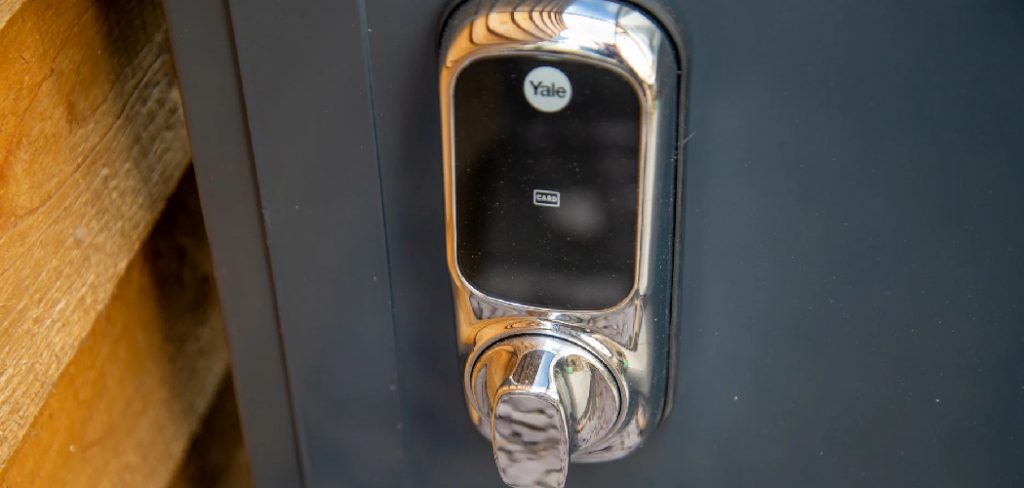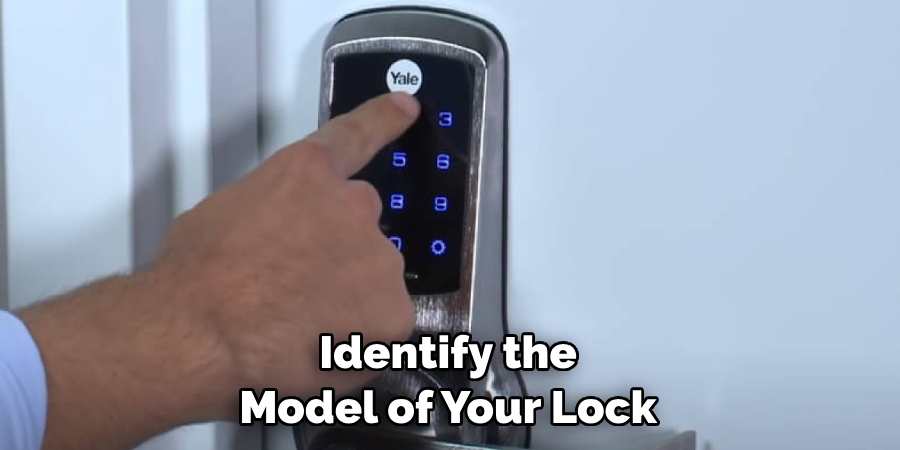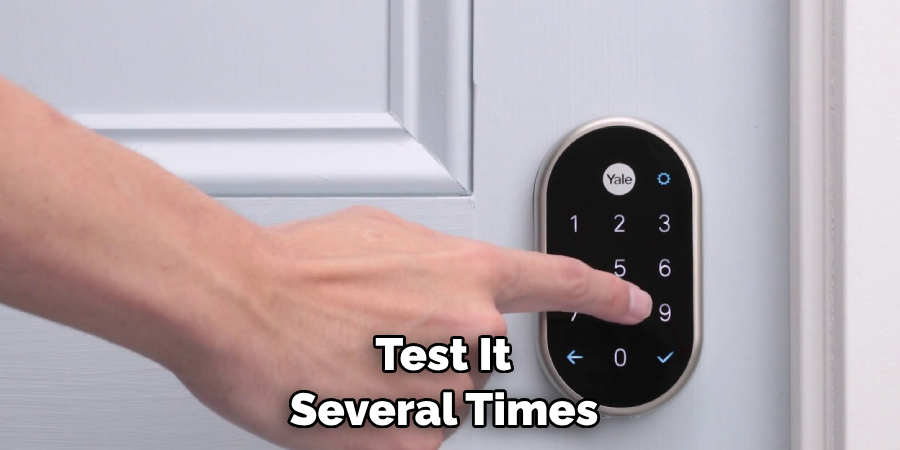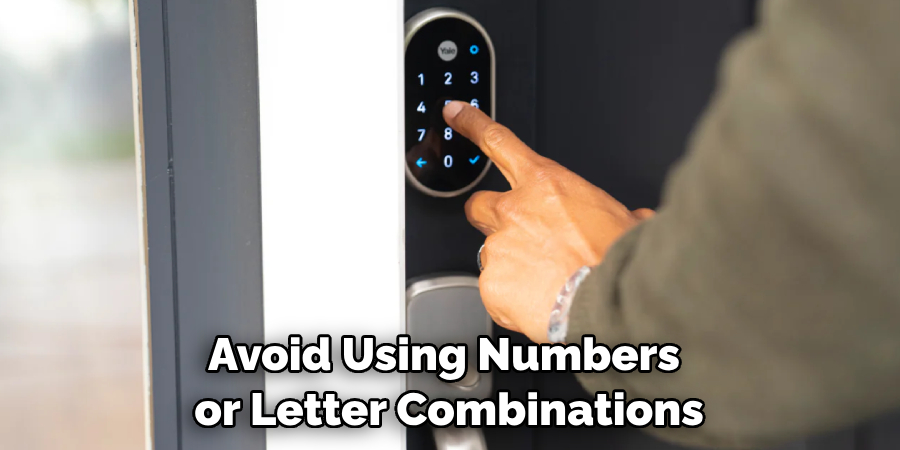Do you have a Yale lock that needs to be changed to protect the security of your home or business? Have you ever wanted to know how it’s done? This blog post is here to help! We’ll explain why changing your Yale lock code may be important, provide comprehensive instructions on changing your combination code, and even delve into other great security features the Yale locks offer.

Whether you need a refresher or are completely new to changing codes, this guide will ensure you can keep unwanted visitors out with confidence. If you’re a first-time DIYer, read this guide before changing your Yale lock code.
In this blog post, we’ll cover from start to finish. Keep reading to learn more about how to change yale lock code!
Why Change Your Lock Code?
Changing the combination code on your Yale lock regularly is one of the best ways to ensure that only those with permission can access your property. You can also make it difficult for anyone to guess your lock code by changing it frequently.
It is also important to note that if you have a deadbolt or other type of Yale lock installed on your property, regularly changing the code prevents unauthorized access and helps protect against potential burglaries.
Overall, changing your Yale lock code can protect you from unwanted visitors and provide peace of mind that your property is secure.
10 Easy Steps on How to Change Yale Lock Code
Step 1. Identify Your Model:

The first step in changing your Yale lock code is to identify the model of your lock. Yale has several different models, and the method for changing the lock code can vary slightly from model to model. If you have trouble identifying your model, remove the cover from the lock and look at the number stamped on it.
Step 2. Gather Your Tools:
Next, gather all of the tools you’ll need to complete this task. This will vary depending on your Yale lock type, but generally, a flathead screwdriver, a pencil, and a paperclip (or other thin metal object) should be sufficient. Be careful not to damage the lock during this process.
Step 3. Remove the Cover:
Now that you have your tools remove the cover of your Yale lock. This may require a bit of force, as most covers are attached with screws and must be removed before they can be removed. Be sure to keep track of any small pieces or screws that may come off during this process.
Step 4. Find the Reset Button:
Once the cover is removed, you should see a reset button on the lock’s interior. It will be located near where you would typically insert your key. Depending on the model, it may have a raised edge or simply be textured differently than its surroundings.
Step 5. Insert a Paperclip:
Using the paperclip (or other thin metal object), press and hold the reset button inside the lock for about three seconds. The lock should click, indicating that it has been successfully reset. Be careful not to press too hard, or you could damage the lock.
Step 6. Set Your New Combination:
While holding the reset button, use a pencil to set your new combination code in the designated spots on the lock. You must enter a four-digit number between 0000 and 9999 for the code to be accepted. Remember to write down your new combination code!

Step 7. Test Your New Combination:
To make sure your new combination is working properly, try using it to open and close the lock. If it doesn’t work or you experience difficulty during this process, repeat steps four through six until you have successfully set a working code. You can also refer to your lock’s user manual for further assistance.
Step 8. Replace the Cover:
Once you’ve successfully set a new combination code, replace the cover of the lock. Secure all screws and small pieces that may have come off during the process. Keep the cover free of dirt and debris, as this can interfere with the lock’s operation.
Step 9. Test Your Lock Again:
To ensure everything is working properly, test your lock again using your new combination code. If it works without problems, you’ve successfully changed your Yale lock code! Keep a copy of your new combination code in a safe place, as it is important always to have access to it.
Step 10. Review Your Security Settings:
Finally, take some time to review the security settings on your lock. This is especially important if you have recently moved or had any other major changes in your home or business. Ensure all of your locks are up to date and working properly, as this will help ensure your security and peace of mind.
By following these easy steps, you can rest assured that your Yale lock is secure and you are the only one with access to it. Changing your code regularly is important in protecting against burglaries and unauthorized entry, so be sure to do it often!
5 Additional Tips and Tricks

- Make sure to go through your manual or contact the manufacturer for specific instructions about changing the Yale lock code. Some models may have different steps than others.
- After you’ve changed your code, it’s a good idea to test it several times before closing the door. This ensures everything works correctly, and you can access your property with the new code.
- Consider marking your new Yale lock code on paper or a digital document for easy reference if you forget it. Store it somewhere safe and secure, such as a locked drawer or password-protected file.
- If possible, try to change your lock’s code every few months. This will help protect your property from potential intruders who may have access to the old code.
- If you need help remembering your lock’s code completely, many manufacturers offer services to reset it for a fee. Contact them directly for more information about this service and their rates.
These are just some of the things you should consider when changing your Yale lock code. With basic knowledge and a few precautionary measures, you’ll be able to change your Yale lock code in no time!
5 Things You Should Avoid
- Only attempt to change your Yale lock code if you have the right tools and instructions. It’s best to stay safe and consult with a professional for any repairs or replacements if necessary.
- Never try to guess the old code in order to gain access to your property. This could damage the lock mechanism or even void its warranty.
- Don’t attempt to change your Yale lock code if you suspect that someone else may have access to the old one. Instead, contact a professional locksmith for help in resetting the lock safely.
- Avoid using numbers or letter combinations that are easy to guess, such as “1234” or “ABCD.” Choose something more unique and difficult to remember for extra security.
- Don’t ever share your Yale lock code with anyone else, even if they promise to keep it confidential. This could put the safety of your property at risk if someone were to gain access to it.

Changing a Yale lock code is important in protecting your property from intruders and unauthorized access. Make sure you follow these tips and advice to ensure your security.
5 Benefits of Changing Your Yale Lock Code Regularly
- Changing the code regularly can help protect against intruders who may have access to your old code.
- It’s easy to do and takes only a few minutes, meaning you can stay secure without wasting too much time.
- You won’t have to worry about forgetting your lock code, as you can always easily reset it.
- Regularly updating the code can help reduce the chances of someone else guessing or accessing it without authorization.
- It’s a great way to keep your property safe and secure while giving yourself peace of mind.
By changing your Yale lock code regularly, you can ensure the safety and security of your property. Make sure to keep these tips in mind when updating your code. It’s an important part of keeping your valuables safe from potential intruders!
Conclusion
To conclude, how to change Yale lock code is quite simple once you know the steps and have all of the necessary tools. It’s essential to keep your lock code confidential so only you can access it. Be sure to use a combination of letters, numbers, and symbols, as it is much more difficult for someone else to guess this type of code than one with just words or numbers associated with your name.
Furthermore, always test the combination after setup to confirm if it works correctly. Locks are designed to keep our properties safe but also provide us with a sense of peace of mind; having an updated lock code helps us ensure we always feel secure when locking or unlocking doors.
Consider these steps when changing yours, and see how easy it can be! Thanks for reading, and stay safe. Happy locking!
About
Safety Fic is a distinguished figure in the world of Diy design, with a decade of expertise creating innovative and sustainable Diy solutions. His professional focus lies in merging traditional craftsmanship with modern manufacturing techniques, fostering designs that are both practical and environmentally conscious. As the author of diy, Safety Fic delves into the art and science of Safety Fic-making, inspiring artisans and industry professionals alike.
Education RMIT University
(Melbourne, Australia) Associate Degree in Design (Safety Fic) Focus on sustainable design, industry-driven projects, and practical craftsmanship. Gained hands-on experience with traditional and digital manufacturing tools, such as CAD and CNC software.
Nottingham Trent University
(United Kingdom) Bachelor’s in diyfastly.com and Product Design (Honors) Specialized in product design with a focus on blending creativity with production techniques. Participated in industry projects, working with companies like John Lewis and Vitsoe to gain real-world insights.
Publications and Impact
In diy, Safety Fic his insights on indoor design processes, materials, and strategies for efficient production. His writing bridges the gap between artisan knowledge and modern industry needs, making it a must-read for both budding designers and seasoned professionals.
